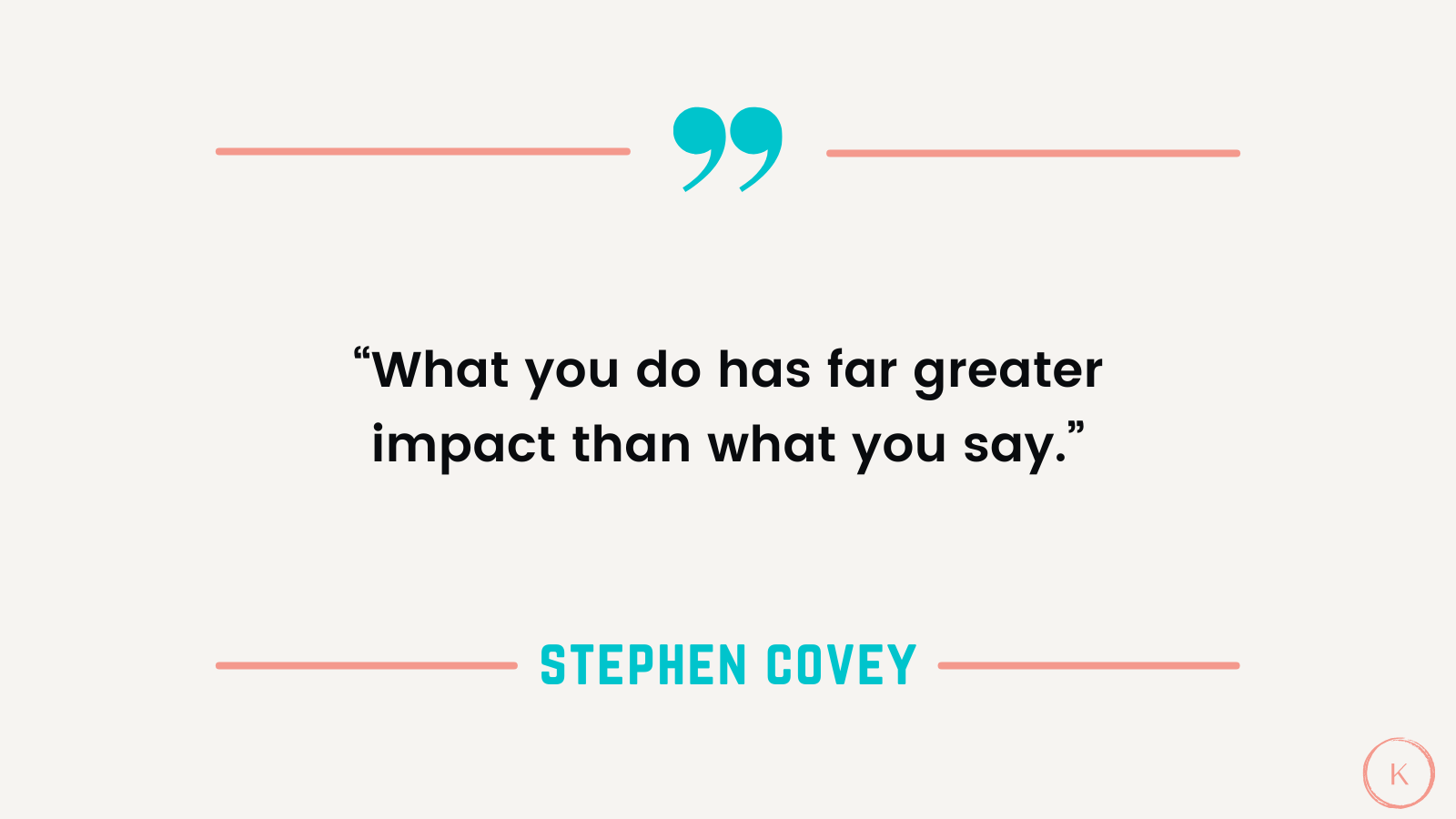It’s one thing to say that we believe in students, but, when there is a lack of congruence with what we say and what we do, actions always speak louder than words. Katie Wright, Director of M.Ed Programs at High Tech High Graduate School of Education, highlights this in her blog post “Do as I Say, Not as I Do.”
A teacher may say aloud to students, “Mistakes help your brain grow!,” but then in the next breath that same teacher might praise rapid responses from students instead of allowing for sufficient wait time. Here, students discern the teacher prefers a fast response and does not place value on grappling with tough questions or making mistakes. Another example: if a teacher intervenes quickly when a student is struggling to reply to a question (with the positive intention of helping that student to save face in front of peers), the student discerns the teacher actually has a low estimation of her or his ability.
This same thing happens when administrators tell teachers and students to take risks but fail to try new things or share what they are learning and how they are learning it with those they serve. When our words don’t match our actions, what we do speaks much louder than what we say.
Creating the climate for success begins with aligning beliefs, actions, and expectations. As Rosenthal and Babad note, “When we expect certain behaviors of others, we are likely to act in ways that make the expected behavior more likely to occur.”
We hear a lot of talk about creating opportunities for students to interact and have more voice and choice in their own learning, but I also hear teachers who hold back because they aren’t sure their students would actually be capable of this type of work. I’ve also had administrators that tell me that voice and choice for educators sounds like a great idea, but the teachers aren’t ready for this. We hold people back based on our assumptions and our fear rather than believing in their ability to try, learn, and grow.
I saw this play out in real life while working with a group of experienced teachers to shift to more authentic, project-based learning. We explored a variety of new approaches, collaborated on new ideas, and everyone was excited—in theory—but offered a variety of reasons for why it wouldn’t work in their classrooms. Teachers were facing challenges of pacing guides, time, resources, the population, testing, and more. All of their excuses were true, but I didn’t let them off the hook. Each of the teachers tried something new in their classrooms. Albeit, depending on their comfort level, there was a wide range of implementation. Some tried a new strategy; others tried a whole lesson, and others implemented larger projects. With the exception of one teacher out of twenty-five, each teacher shared about how their students had “exceeded their expectations.” The following teacher’s reflection summarizes the group’s collective experiences:
Although I had faith that my students would produce quality work for this assignment, what they produced exceeded my expectations. Perhaps I should not have been surprised; for when you give students a sense of ownership and choice over their learning the creativity this unleashes often leads to great results. The results of this assignment make me want to develop similar projects in the future.
I am often asked how to change teacher mindsets. The reality is that you can’t just change what people believe. The best way to change beliefs is by creating conditions and experiences for teachers to try new things and see what is possible. I can tell you all day long that the learners (administrators, teachers, or students) in your context are capable, but you probably won’t believe me until you experience it. You are just going to have to take a leap of faith and try something to see for yourself. I believe in you!
This is an excerpt from Learner-Centered Innovation



I see this with the teachers we work with too! They tell us they love their kids and in their next breath they tell us how their kids are so far behind and need to spend their time getting ready for “the test”.
I can’t tell you how many times I have heard “You don’t know THESE kids” or “My students could never do that” or “You don’t understand the behavior problems we have”.
I know that these attitudes are endemic across the US, but it is still comforting to know that you have struggles similar to ours and that our approach to solving them is so similar to yours!